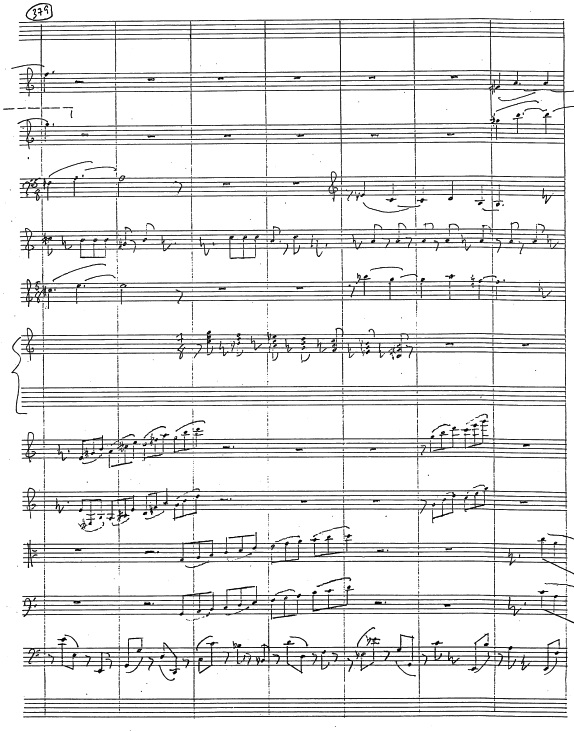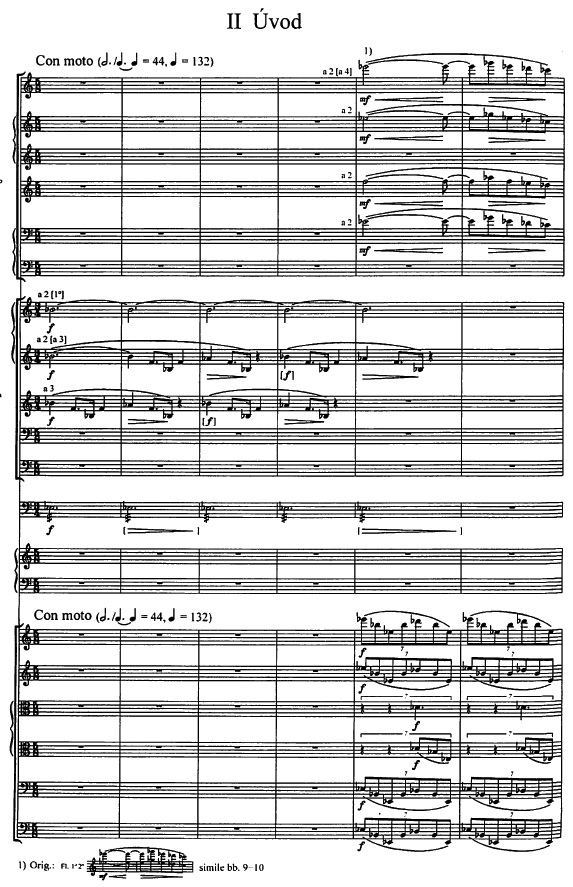Below is a page from Conlon Nancarrow’s Piece No. 2 for Small Orchestra of 1986. If it is sufficiently readable here, you may be able to see that the different instruments are in three meters at once: some in 5/8, some in 6/8, and some in 7/8. Very difficult to play convincingly, because part of the orchestra will be playing every fourth 8th-note in the 7/8 while others are playing every third 8th-note in 5/8, and so on. The conductor gives the downbeat of each measure, and the poor sods have to fit their 5 or 7 into it as best they can:

A couple of weeks ago in Amsterdam I made my usual pilgrimage to Broekmans & Van Poppel, one of the world’s great music stores and a place I can spend hours browsing in. There are always a few composers on my horizon with whose work I keep meaning to become more familiar, and Leos Janacek is one of them lately. So I happened to pick up the Glagolitic Mass (1926), and bought it – because in the second movement I was startled to find the exact same set of simultaneous meters Nancarrow uses above:
 The brass is notated in 3/4, and the winds and strings in 5/8, though the strings have to play a septuplet across the 5/8; and these rhythms continue in poly-tempo profusion throughout the movement. Of course I think it highly unlikely that Nancarrow ever saw a score to Janacek’s Glagolitic Mass (I had actually heard the piece in high school, but it’s difficult to register a bizarre effect like this if you’re not expecting anything of the kind). Had Conlon seen it, I think it more likely that he would have avoided using a rhythmic setup Janacek had already used six decades earlier. What an extraordinary coincidence – and how much credit I will have to give Janacek from now on for his precedence.
The brass is notated in 3/4, and the winds and strings in 5/8, though the strings have to play a septuplet across the 5/8; and these rhythms continue in poly-tempo profusion throughout the movement. Of course I think it highly unlikely that Nancarrow ever saw a score to Janacek’s Glagolitic Mass (I had actually heard the piece in high school, but it’s difficult to register a bizarre effect like this if you’re not expecting anything of the kind). Had Conlon seen it, I think it more likely that he would have avoided using a rhythmic setup Janacek had already used six decades earlier. What an extraordinary coincidence – and how much credit I will have to give Janacek from now on for his precedence.
UPDATE: Let me add: the main thing that’s kept me from getting as familiar with Janacek as I’d like to be is the difficulty of finding English translations of his opera libretti. Anyone know a way around that one, let me know.
